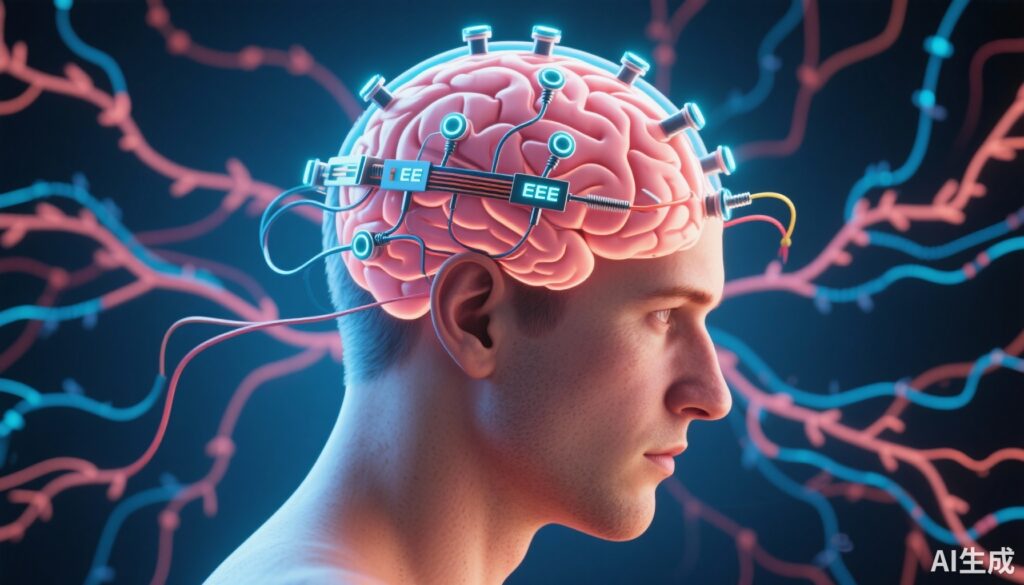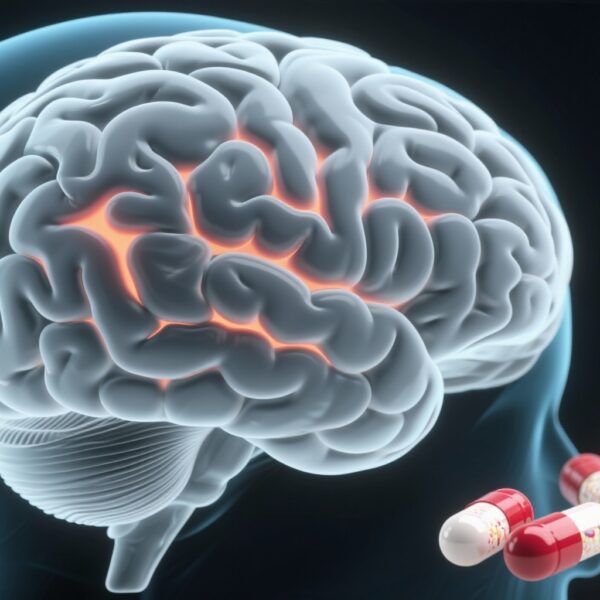Highlight
– Cognition-guided EEG-based neurofeedback can specifically deactivate brain patterns triggered by methamphetamine cues in men with methamphetamine use disorder (MUD).
– Ten sessions of real-time neurofeedback training significantly enhance response inhibition compared to sham feedback or standard rehabilitation.
– Initial neurofeedback performance and baseline characteristics predict improvements in cognitive control.
– This intervention demonstrates potential as an innovative adjunct to traditional addiction treatment modalities.
Study Background
Methamphetamine use disorder (MUD) is characterized by compulsive methamphetamine consumption and relapse, driven partly by impaired response inhibition — the ability to suppress inappropriate or drug-related responses. Methamphetamine-related environmental cues evoke strong neural reactivity, which undermines inhibitory control and contributes to relapse risk. Current treatments for MUD yield only partial success, and cognitive deficits such as impaired inhibition remain unmet therapeutic targets. Neurofeedback, a neuromodulation technique that trains individuals to regulate their brain activity in real time, offers a promising avenue to remediate cognitive dysfunctions. This study addresses whether cognition-guided EEG neurofeedback focused on deactivating methamphetamine cue-reactive brain patterns can enhance response inhibition in men with MUD, potentially improving treatment outcomes.
Study Design
This investigation included two independent cohorts of men diagnosed with MUD (total n=99). The approach utilized a closed-loop EEG neurofeedback protocol tailored to individual methamphetamine cue reactivity patterns identified via offline multivariate pattern analysis of whole-scalp EEG data during a cue-reactivity task.
Sample 1 (n=66): Participants were randomized into two groups: (1) Real neurofeedback group 1 (N=33), who received 10 neurofeedback sessions aimed at deactivating their own methamphetamine cue-related brain patterns; and (2) Yoke neurofeedback group (N=33), receiving feedback based on matched participants’ brain activity patterns (sham control). This design allowed assessment of the specificity of feedback.
Sample 2 (n=33): Used to validate findings from Sample 1, included a real neurofeedback group 2 (N=17) and a standard rehabilitation group (N=16) that received usual care without neurofeedback.
Outcome measurement: Response inhibition was evaluated using a methamphetamine cue-based go/no-go task before and after the intervention, with d-prime serving as the primary measure indicating ability to discriminate and inhibit responses appropriately.
Key Findings
Specific Deactivation of Methamphetamine Cue Reactivity: In Sample 1, participants in the real neurofeedback group successfully learned to suppress methamphetamine cue-related EEG patterns over 10 sessions, demonstrating the feasibility and target specificity of cognition-guided neurofeedback.
Enhanced Response Inhibition: Post-training, the real neurofeedback group showed a significant improvement in response inhibition metrics (notably d-prime), with a medium effect size (Cohen’s f=0.31). This contrasted with the yoke neurofeedback group, which did not exhibit comparable improvements, indicating that targeted neurofeedback is crucial for cognitive enhancement.
Correlations and Predictive Factors: Neurofeedback performance within the real feedback group positively correlated with improvements in response inhibition. Additionally, baseline neurocognitive characteristics and initial neurofeedback training success predicted the magnitude of response inhibition gains, suggesting the potential for customizing neurofeedback interventions based on individual profiles.
Validation in Sample 2: The replication cohort confirmed that real neurofeedback improved response inhibition over standard rehabilitation alone. Response inhibition improvements were again predictable based on baseline and early neurofeedback responses, reinforcing the reproducibility and clinical relevance of findings.
Safety and Tolerability: The study reported no adverse events or safety concerns related to neurofeedback sessions, underscoring the intervention’s suitability as a low-risk adjunct therapy.
Expert Commentary
This study pioneers a precision neuromodulation method by integrating machine learning-based EEG pattern decoding with real-time neurofeedback to address a core cognitive deficit in MUD. By targeting methamphetamine cue reactivity directly, it leverages a neurobiological substrate critical for addiction maintenance and relapse. The encouraging effect sizes and replication in an independent sample highlight the robustness of this approach.
However, generalizability is limited to men with MUD, and longer-term follow-up data are needed to assess durability of cognitive gains and translation into clinical outcomes such as relapse prevention. The yoke control design provides rigorous controls for nonspecific effects, but future trials could incorporate blinded clinical assessments and larger samples. Additionally, integrating neurofeedback with pharmacotherapy or psychotherapy might yield additive benefits.
Mechanistically, this protocol likely enhances prefrontal cognitive control networks by diminishing hypersensitivity to drug cues, a key driver of inhibitory failure. Electrophysiological data combined with behavioral improvements make a compelling case for cognitive-guided neuromodulation as a therapeutic innovation in addiction medicine.
Conclusion
This study establishes cognition-guided EEG neurofeedback as an effective intervention to improve impaired response inhibition in men with methamphetamine use disorder by deactivating methamphetamine cue-related brain activity patterns. It demonstrates specificity, replicability, and clinical potential exceeding standard rehabilitation. These findings open new avenues for personalized neuromodulatory treatments for MUD and possibly other substance use disorders characterized by cue-driven cognitive control deficits. Further research should extend to diverse populations, longer-term outcomes, and integration with comprehensive care models to maximize clinical impact.
Funding and Clinical Trial Information
The original study as published in the American Journal of Psychiatry did not detail external funding sources or clinical trial registration numbers in the provided summary. Readers are encouraged to refer to the original publication (Gou et al., 2025) for disclosures.
References
Gou H, Bu J, Cheng Y, Liu C, Gan H, Liu M, Zhao Q, Chen X, Ren J, Hong W, Wang R, Cao Y, Yu C, Chen X, Zhang X. Improved Response Inhibition Through Cognition-Guided EEG Neurofeedback in Men With Methamphetamine Use Disorder. Am J Psychiatry. 2025 Sep 1;182(9):861-877. doi: 10.1176/appi.ajp.20240475. Epub 2025 Jun 11. PMID: 40495523.



